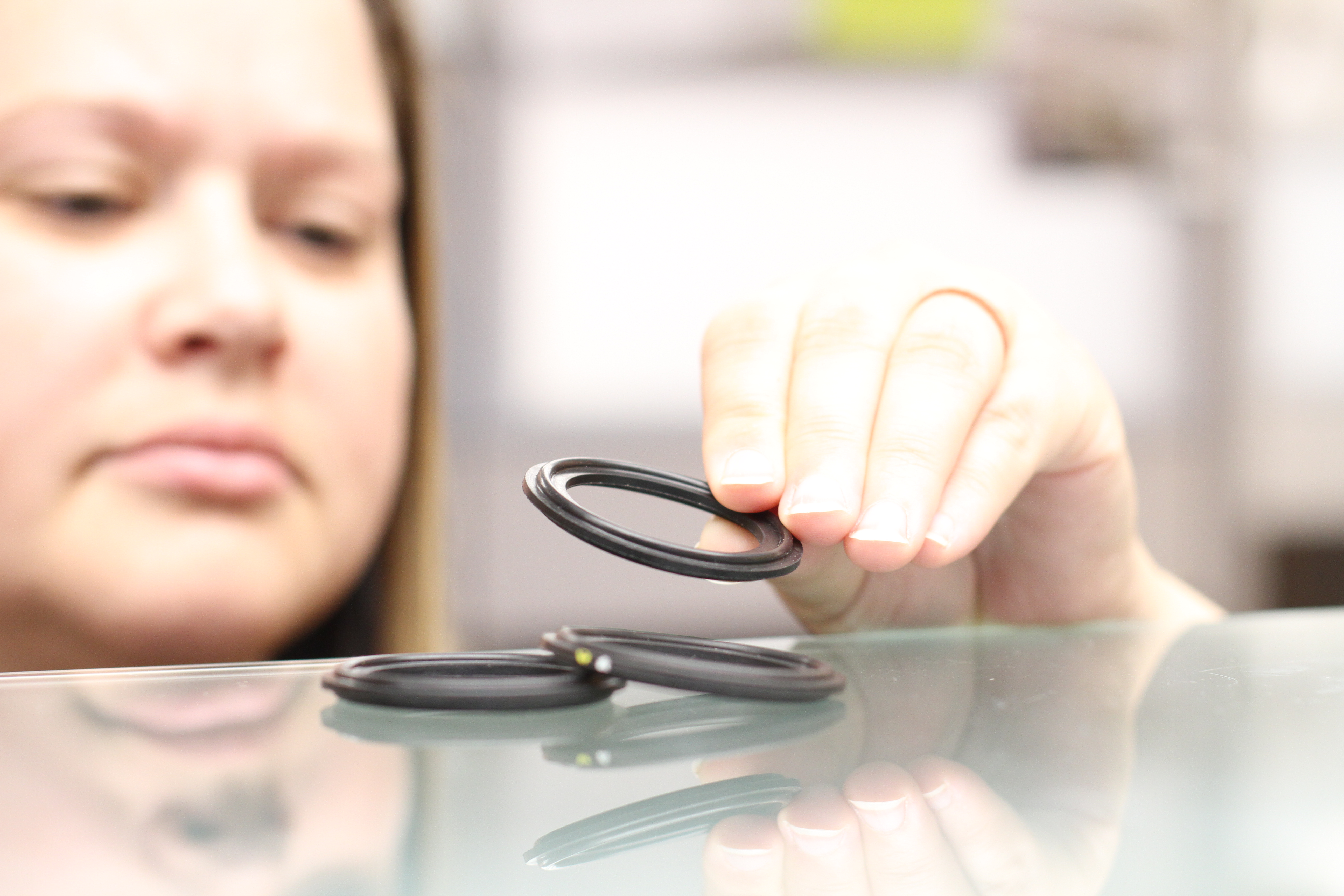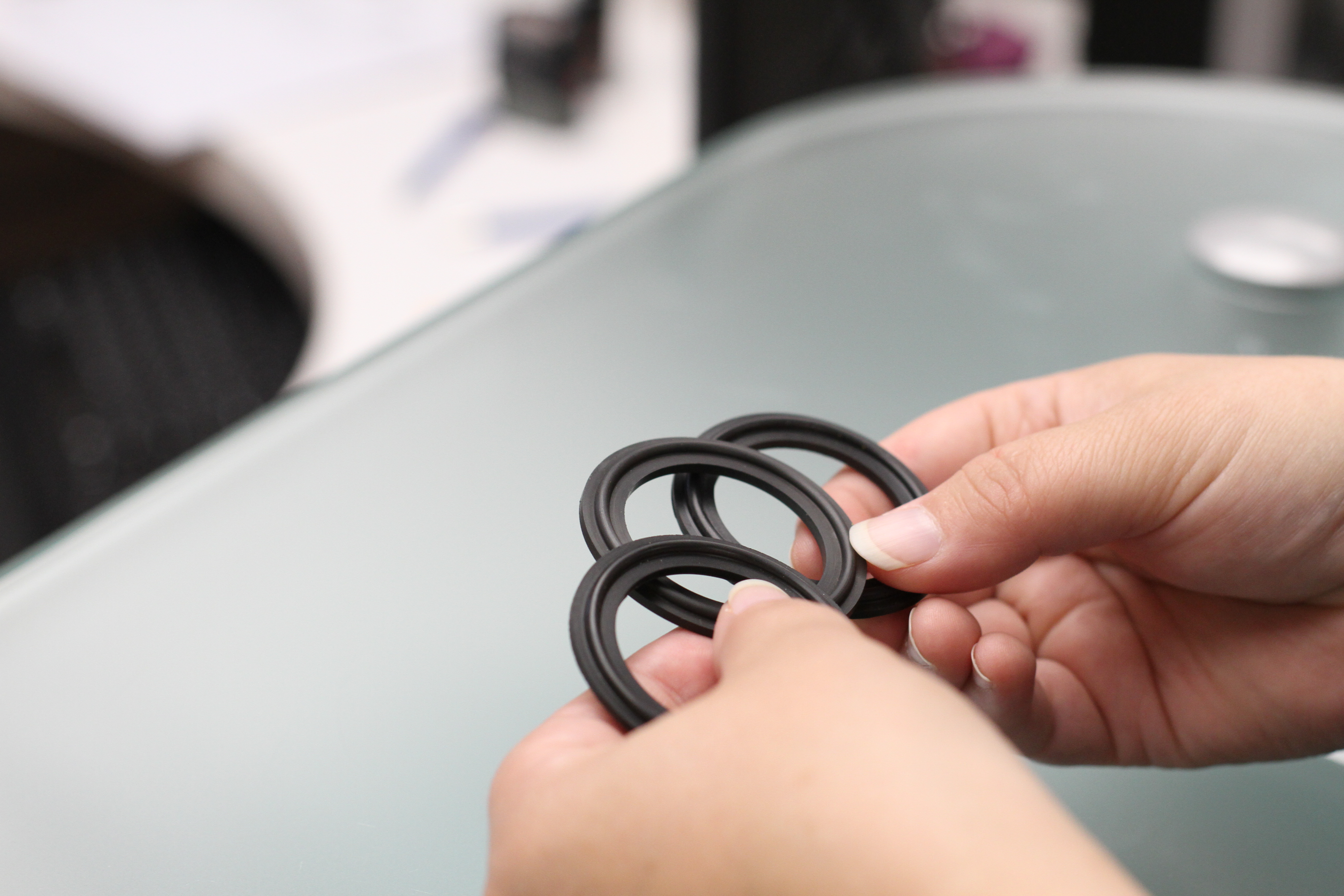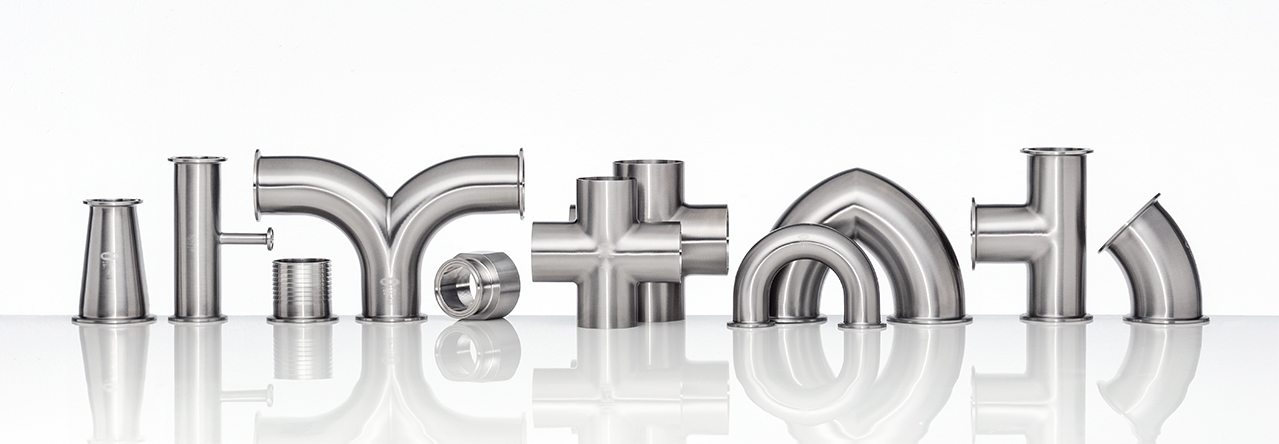

Buna, EPDM, Viton® – what’s the difference? They look virtually the same to the naked eye, however; there are subtle differences that must be taken into consideration when selecting the appropriate material for your application.
To simplify this discussion, there are three key areas to focus on; temperature range, chemical resistance and cost. One should always consider specific requirements and factors pertaining to the unique processing application. Additionally, it is important to note the focus of this topic pertains to static gasket seals which are not subject to the same wear and tear as dynamic seals such as O-rings and valve seats, which abrasive products are much harder on.
Buna-N, also known as Nitrile or NBR, is a synthetic rubber material that will handle most dairy, food and sanitary processing services. It has relatively poor acid and mild alkali resistance. It is good for vegetable oil service. Buna’s temperature range runs between -40°F (-40°C) and 225°F (107 °C). However, Buna is not recommended for use with CIP sanitizing agents that contain acids and peroxides like OXONIA and has poor resistance to ozone.
EPDM (Ethylene Propylene Diene Terpolymer) stretches the upper and lower boundaries for temperature when compared to Buna. EPDM is excellent for hot water and steam service up to 275°F (135°C). EPDM also keeps its flexibility in freezing temperatures (down to -55°F). It is very abrasion-resistant and has excellent resistance to ozone, sunlight, weather and de-ionized water. Additionally, it has good tensile strength and good resistance to typical cleaning concentrations of acids, alkalis and alcohols. Keep in mind EPDM should not be used for oil-based products and is slightly more expensive.
Viton® A (Bisphenol AF Cured Fluorocarbon Elastomer) has excellent mechanical, chemical, heat and steam resistance. It is particularly well-suited for hot fatty and oil-based products. Viton® is especially good for hard vacuum service because of its high molecular weight and low gas permeability. Viton® is rated -20°F (-29°C) to 450°F (232°C) and for intermittent exposure up to 500°F (260°C). Due to these excellent performance properties the price of Viton® is significantly more expensive than both Buna and EPDM. Other grades of Viton® are also available that bring better chemical resistance than Viton® A, such as Viton® GF and Viton® ETP.
Aside from the key product attributes highlighted, it is always important to focus on the specific requirements for your application. Applicable standards and regulations that must be conformed to, such as FDA standards, should be used when determining which elastomer type is appropriate.
Rodger Industries Inc. carries a wide range of gaskets and other sealing components used in the dairy, food, beverage, pharmaceutical and other hygienic processing industries. To view our gasket range, click here.
For a complete comparison of performance properties on the above three elastomers, as well as other elastomers, please click here.

